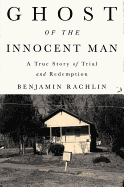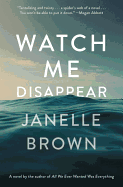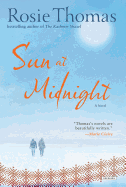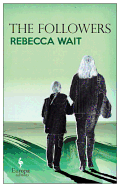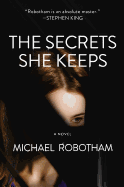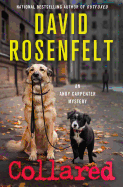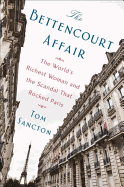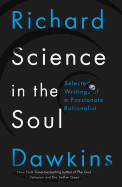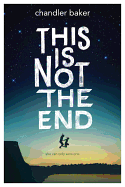Friday, August 18, 2017
 |
|
| photo: Laura Hanfin | |
N.K. Jemisin's work is distinguished by, as our reviewer wrote about The Kingdom of Gods, "her ability to imagine and describe the mysteries of the universe in language that is at once elegant and profane, and thus, true." She concludes her Broken Earth trilogy (the first two volumes of which have won back-to-back Hugo awards) with The Stone Sky, out now from Orbit. Shelf Awareness spoke with her about writing the final installment. 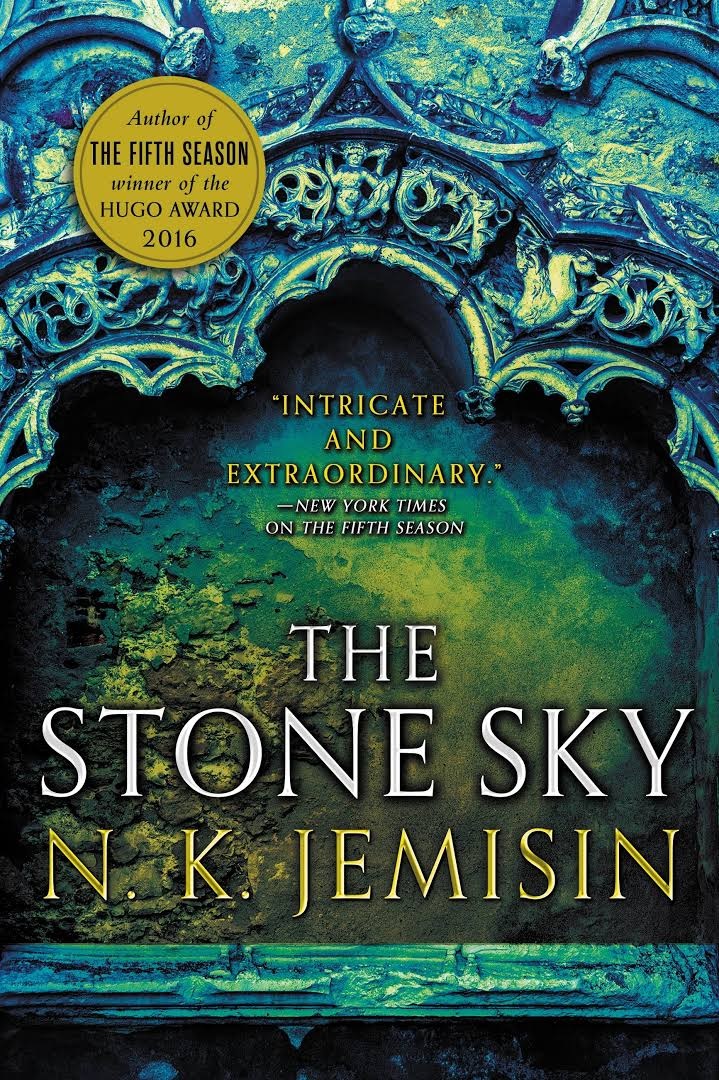 The complex relationship between Essun and her daughter Nassun in The Stone Sky is beautifully and meticulously rendered--making for an undeniably satisfying read--though at times it's hard to endure due to the difficult path they must walk. Jemisin was inspired, to an extent, to plumb the depths of familial bonds by her mother. "As I wrote the trilogy, my mother was dealing with increasingly-severe health issues--she died earlier this year. So I think, on some level, I was processing all of that."
The complex relationship between Essun and her daughter Nassun in The Stone Sky is beautifully and meticulously rendered--making for an undeniably satisfying read--though at times it's hard to endure due to the difficult path they must walk. Jemisin was inspired, to an extent, to plumb the depths of familial bonds by her mother. "As I wrote the trilogy, my mother was dealing with increasingly-severe health issues--she died earlier this year. So I think, on some level, I was processing all of that."
Does she miss a world and its characters once she's written the last book in a series? Jemisin said, "I rarely miss my worlds, once I'm done with them, as long as I feel like I've told their story adequately. I have a short attention span! And I've already broken ground on my next series, anyway, which I was chafing to start writing. Remember, book production runs well behind actual writing, time-wise; to me, the bulk of writing The Stone Sky ended almost a year ago. But I'm glad the rest of the world will finally get a chance to see what's been in my head, now!" --Stefanie Hargreaves, editor, Shelf Awareness for Readers
The Bookshop at Water's End
by Patti Callahan Henry
For three magical summers when they were young, Bonny Moreland and Lainey McKay were the Summer Sisters: best friends whose families spent long, languid weeks together in tiny Watersend, S.C., between the river and the sea. The women have remained close, building successful careers and families, though both are haunted by the long-ago night of Lainey's mother's disappearance from Watersend. When Bonny's life erupts in personal and professional crisis, she flees her Charleston home for the river house and begs Lainey to join her. With Bonny's college-age daughter Piper and Lainey's young children in tow, the friends must face the ghosts of the past and decide how to shape their futures.
Patti Callahan Henry (The Idea of Love, The Stories We Tell) weaves a rich narrative of deep friendship and long-buried secrets in her 12th novel, The Bookshop at Water's End. The plot focuses on Bonny, Lainey and Piper, although Henry also elaborates on the community of Watersend, including the titular bookshop and its owner, Mimi, who carries a few secrets herself. Henry expertly braids together the women's stories and struggles: Piper's deep fears and insecurities, Bonny's anguish at accidentally causing a patient's death in the ER, Lainey's grief over her mother's disappearance. For all of them, love and forgiveness--though not an instant cure--will prove to be the way forward.
Steeped in its Southern setting and full of charm and quiet wisdom, The Bookshop at Water's End is a satisfying story of friendship, grace and beginning again. --Katie Noah Gibson, blogger at Cakes, Tea and Dreams
Discover: Patti Callahan Henry's 12th novel is a satisfying story of friendship and forgiveness in a tiny Southern beach town.
The Library of Light and Shadow
by M.J. Rose
M.J. Rose (The Secret Language of Stones) once again shows off her flair for a genre-defying blend of historical fiction, fantasy and romance in her third novel about the descendants of La Lune, a 16th-century French courtesan and witch.
At the height of the Jazz Age, Delphine Duplessi moves in Manhattan's most elite circles, sought after for her gift of painting shadow portraits, in which her magick lets her see and paint her sitter's darkest secrets. Yet she hides her own: that she left her native France five years ago to protect her lover from the events of a terrible vision, and that her family's curse to love only once means she will pine for him always. When a shadow painting triggers a bloody tragedy, Delphine returns to southern France, vowing not to practice her magick again. Her twin brother and manager, Sebastian, has other plans, drawing Delphine into searching a medieval-era chateau for its owner's obsession, the lost writings of alchemist Nicolas Flamel. There, Delphine comes face-to-face with danger--and with Mathieu, her lost love who wants her back in his arms no matter the risk to himself.
Rose's romantic depiction of the 1920s is a sumptuous feast of glamorous parties, cameos by Matisse and Picasso, and snippets of Delphine and Mathieu's affair in Paris. While The Library of Light and Shadow is escapism at its best, Rose also shows Delphine's growth from fearing life and legacy to embracing it. Pure enchantment. --Jaclyn Fulwood, blogger at Infinite Reads
Discover: In the latest installment of M.J. Rose's series following the descendants of La Lune, Delphine Duplessi tries to escape the tragedy wrought by her magick.
Watch Me Disappear
by Janelle Brown
Janelle Brown's gripping and emotional third novel, Watch Me Disappear, begins one year after California wife and mom Billie Flanagan has vanished. She had been taking a solo hike in the Desolation Wilderness, and only her deserted car and one hiking boot were found near the trail. Her husband, Jonathan, and 16-year-old daughter, Olive, have been left to cope with their loss and the uncertainty of whether Billie was killed, kidnapped or ran away. Jonathan manages by drinking, and Olive becomes distant and withdrawn.
As the one-year anniversary of the disappearance approaches, Olive starts to have visions or hallucinations of her mother, which convince her that her mother is alive and trying to communicate with her. Jonathan is anxiously awaiting his wife's death certificate and her life insurance that will bring the family some financial security. He has quit his job to write a memoir about his idyllic marriage and the family's grief after her disappearance. But as he delves into his research, he begins to uncover gaps and inconsistencies in Billie's past. How well did he know his wife, and how happy was she in their marriage? While Olive believes her mother wants to be found, Jonathan is beginning to think she may have intentionally deserted them. "Life is more complicated than that, there are endless shades of gray that compromise a human being," Jonathan ruminates.
Brown's Watch Me Disappear mixes elements of Gone Girl and Ordinary People to create an original, intriguing and compelling depiction of family secrets, lies and illusions. --Kevin Howell, independent reviewer and marketing consultant
Discover: Janelle Brown's intriguing, emotional and gripping novel is part mystery and part rumination on grief and the subjectivity of truth.
Sun at Midnight
by Rosie Thomas
Rosie Thomas (The Kashmir Shawl, The Illusionists) tackles daunting Antarctica in Sun at Midnight, a beautifully romantic novel. Thomas, who has traveled to the continent, aptly captures its harsh terrain, forbidding isolation and its appeal--especially for those who wish to escape society. One such man is James Rooker, reticent about his past and happy to sign on as mechanic and handyman for a group of scientists set to spend a summer exploring Antarctica.
Somewhat to her own surprise, Alice Peel is one of those scientists. She is a geologist, but her mother, the famous Margaret Mather, was a biologist of worldwide repute who undertook several Antarctic expeditions in her youth. Margaret would love to go again, but she is too elderly and frail for this trip, and begs Alice to go in her stead. Unable to tell her mother no, especially after she discovers her boyfriend cheating on her, Alice agrees to join the team.
The tiny settlement that becomes Alice and Rooker's home for the brutal Antarctic summer is a microcosm of the world at large as the 10 scientists and support staff members are thrust into constant, isolated contact. Jealousies, lust, hate and affection abound, and one thing is sure: none of them will leave unchanged--if they survive.
A charming story, set in a fascinating location, Sun at Midnight is a compelling novel. Originally published in the U.K. in 2004, American audiences are sure to be pleased finally to get their hands on it. --Jessica Howard, bookseller at Bookmans
Discover: In this captivating novel, a geologist finds love in an unexpected location--Antarctica.
The Followers
by Rebecca Wait
The Followers starts in the "after": Judith is entering a prison to visit her mother, Stephanie, imprisoned for as-yet unknown reasons. Rebecca Wait (The View on the Way Down) then moves skillfully through time to reveal their life "before." The mother works as a waitress to support herself and her young daughter; Stephanie meets Nathaniel, a charming man who takes an interest in her difficulties. Mother and daughter move in with Nathaniel and his "followers" in order to pursue a new life with a new sense of purpose.
After their move to the Ark, as Nathaniel's small group of followers call it, Wait deftly explores cult thinking and group psychology. Even more captivating than Stephanie's acceptance of the rules of Nathaniel's cult, however, is Judith's 12-year-old determination not to do just that: "What she was discovering was that it was harder to hold on to all your normal thoughts when everyone around you believed something different. You started to doubt yourself."
This doubt, planted in Judith during her time at the Ark, is pervasive throughout the "after" of her experiences there. And therein lies Wait's greatest success in The Followers: embedded within the imagined story of one particular religious cult, which is in and of itself more than sufficient as a novel, lurks another story. It is one about individuality and selfhood, about responsibility and what it means to be strong--even long after the test of one's strength appears to have passed. --Kerry McHugh, blogger at Entomology of a Bookworm
Discover: Rebecca Wait's novel captivates from the very beginning, unfolding the story of a religious cult and one young girl's strength in resisting its pull.
Mystery & Thriller
The Secrets She Keeps
by Michael Robotham
Michael Robotham takes a break from his Joe O'Loughlin series with The Secrets She Keeps, about two expectant mothers who strike up a friendship over their similar due dates. But the similarities end there.
Agatha works at a supermarket and her baby's father is away on assignment for the Royal Navy. Though she's tried to reach him numerous times, he hasn't responded, and she isn't certain how he'll react when he finds out about the pregnancy.
Meanwhile Meghan, who shops at the market where Agatha works, has a dreamy TV announcer husband, two cute kids and a beautiful home. Agatha idolizes Meghan for her seemingly perfect life--and will go to great lengths to claim one for herself.
Robotham's series fans might wish the good psychologist Professor O'Loughlin were in this standalone to help poor Agatha, a highly disturbed woman. The author doesn't judge her harshly, though; he pulls readers into her acute loneliness and feelings of inadequacy. After she and Meghan are caught in a downpour, Agatha observes: "Meg looks like a fair-haired Andie MacDowell in Four Weddings and a Funeral. I look like Janet Leigh in Psycho before the knife starts shredding the shower curtain."
The first part of this thriller is a slow burn as readers get to know the two women and their contrasting lives. The pacing picks up about halfway through, when the story takes a sinister turn. The plot twists aren't completely surprising, but it's less about the secrets than the reasons Agatha and Meghan must keep them hidden. --Elyse Dinh-McCrillis, blogger at Pop Culture Nerd
Discover: Two pregnant women bond over their pregnancies, but only one can have a happy ending.
Collared
by David Rosenfelt
Andy Carpenter is an independently wealthy defense attorney in Paterson, N.J. He's also an exasperating husband, a newly adoptive father and a devoted animal lover. In Collared, the 14th installment in David Rosenfelt's dog-centric mystery series, Andy and his crackerjack investigative team go back to work. This time, a border collie with a limp is abandoned at the rescue shelter owned by Andy. When the stray is scanned, the embedded identity chip reveals he is actually Cody, a dog whose hair sample DNA proved the lynchpin in a prior kidnapping case.
Who left the dog at the shelter and why? Andy and his cohorts--including his long-suffering wife, an ex-police officer--resurrect a three-year-old case involving Cody, whose owner was Jill Hickman. At the age of 35, Jill--a successful, single businesswoman--adopted a one-month-old child she named Dylan. When Hickman's nanny took Dylan and Cody for a walk, the nanny was brutally assaulted, and the child and the dog both disappeared. The "DNA dog," as Cody was nicknamed, ultimately led police to the suspected kidnapper--a once top employee from Hickman's company and also her former fiancé--who was found guilty of the crime, though Cody and Dylan remained missing. With Cody's re-emergence, hopes rise for all involved. Might Dylan, too, still be alive?
Short chapters and dialogue-driven prose are hallmarks of Rosenfelt's (Hounded) suspenseful, long-running series. This installment is crafted with an intriguing premise, witty recurrent characters and a well-conceived mystery that unravels with surprising twists. --Kathleen Gerard, blogger at Reading Between the Lines
Discover: An abandoned border collie revives a child abduction case and the career of a devoted defense attorney.
Biography & Memoir
The Bettencourt Affair: The World's Richest Woman and the Scandal That Rocked Paris
by Tom Sancton
In The Bettencourt Affair, former Paris bureau chief for Time magazine Tom Sancton (Death of a Princess) narrates the legal battle between 94-year-old L'Oréal heir Liliane Bettencourt and her daughter, Françoise Meyers, over Liliane's estate and her late-in-life companion, François-Marie Banier.
Liliane was the only child of a chemist who parlayed a nontoxic hair dye into a behemoth fashion conglomerate. When he died, she inherited the stock and actively participated on its board and subsidiary investments. A fashionable, assertive, powerful and wealthy woman, Liliane married André Bettencourt. Their daughter, Françoise, grew up with a disinterested father and a strong mother disappointed in her child's introverted inclinations. She married the banker Jean-Pierre Meyers. In the interest of estate planning, Liliane set up an inheritance trust whereby Françoise and her two sons would receive her L'Oréal stock upon her death, but Liliane would get all the dividends during her lifetime.
Banier was a gay photographer, artist and writer who insinuated himself into celebrity circles with humor and charm. Although only 40, he and 65-year-old Liliane hit it off. Over 20 years, Banier received almost a billion euros worth of goodies from the captivated heiress. Françoise appeared miffed that Banier seemed to have become the child to her mother that she had never been. When André died in 2007, Françoise hired a high-profile lawyer to seek criminal charges against Banier for abus de faiblesse (abuse of weakness), and all hell broke loose in the kingdom. The Bettencourt Affair is a devilishly engaging immersion into a world few of us can imagine. --Bruce Jacobs, founding partner, Watermark Books & Cafe, Wichita, Kan.
Discover: Former Time magazine Paris bureau chief Tom Sancton lays out the juicy history, gossip and political entanglements of one of the world's richest families.
Social Science
Ghost of the Innocent Man: A True Story of Trial and Redemption
by Benjamin Rachlin
Defense attorney Ed de Torres, the North Carolina Prisoner Legal Services and the Center on Actual Innocence all believed Willie J. Grimes was innocent of the rape for which he was convicted in 1988. Appeals were filed on his behalf, but despite a careless police investigation and suspicious witness identification, no part of his trial created cause for a reversal. The process functioned correctly, but the outcome was wrong. DNA was in its infancy in 1988, and, later, when the Center on Actual Innocence attempted to investigate Grimes's case, they were unable to locate any of the physical evidence from the original trial.
Christine Mumma was a clerk for North Carolina Supreme Court justice Beverly Lake when she became frustrated with cases where individuals' guilt seemed questionable. Ghost of the Innocent Man is the story of Grimes's fight to prove his innocence and Mumma's battle to improve the catastrophic situation of scant recourse when a jury's determination of guilt is wrong. Author Benjamin Rachlin's thorough investigation of the subject provides an astonishing look at the United States justice system that will educate and incense readers. It reads like a legal thriller. His vivid language leads the audience down prison hallways as well as through despairing minds.
Ghost of the Innocent Man proves that Judge Learned Hand was tragically mistaken in 1923, when he stated, "Our dangers do not lie in too little tenderness to the accused. Our procedure has always been haunted by the ghost of the innocent man convicted. It is an unreal dream." No fewer than 2,000 convicted individuals have been exonerated since 1989; the story of Willie J. Grimes illustrates just how dangerous Learned Hand's erroneous belief is. --Jen Forbus, freelancer
Discover: The story of a wrongly convicted man parallels the creation of the North Carolina Innocence Inquiry Commission in this startling examination of the U.S. justice system.
Science
Science in the Soul: Selected Writings of a Passionate Rationalist
by Richard Dawkins
Richard Dawkins addresses some of the greatest intellectual challenges of the 21st century in his wide-ranging collection of essays Science in the Soul: Selected Writings of a Passionate Rationalist.
The controversial author of The Selfish Gene and The God Delusion, Dawkins is an evolutionary biologist and staunch atheist. Science in the Soul contains eight thematic sections, which all address, to some degree, Dawkins's defense of evolutionary theory and the scientific method itself against what he perceives as a dangerous devaluing of science by religious leaders. His writings vary from essays and lectures to works of satire, and they touch upon science as well as contemporary politics, culture and philosophy.
Dawkins's "passionate" tone slips into condescension rather easily--he describes some religious scholars as not having degrees from decent universities--and one wonders how far the author's polemics stray from the empirical domain of science. He exalts the "poetry" of science but offers little poetry, his prose often more stodgy than evocative. That's not to say Dawkins isn't a great thinker and conversationalist. His perspective can be devastatingly incisive. The best writing in the collection occurs in entries like "Fifty Years On: Killing the Soul?" and "Atheists for Jesus" in which he makes a strong case for secularism. In "The Dead Hand of Plato," he also drafts a compelling argument against essentialism, or what he calls the "gratuitously manufactured discontinuity in a continuous reality." Most importantly, Dawkins evinces the redeeming capacity of humans to contravene their own selfishly wired genes. "We are entitled to throw off the tyranny of the texts," he says, referring to both holy scripture and embedded DNA. In this way, Science in the Soul is thought provoking in both its moral and scientific attitudes. --Scott Neuffer, writer, poet, editor of trampset
Discover: Scientist Richard Dawkins makes an impassioned case for the supremacy of science in this collection of essays.
Children's & Young Adult
The Hearts We Sold
by Emily Lloyd-Jones
Dee Moreno's home is a "place of broken promises and whispered apologies" in which both parents are alcoholics and emotionally abusive. She learned at a young age to be useful and thus invisible. Desperate to escape, Dee applied for and earned a merit scholarship to Brannigan Preparatory Academy, a nearby boarding school. But now, midway through her junior year, she learns that the school is cutting merit scholarships. With no way to make enough money to cover tuition and certain her parents won't help, Dee turns to a demon for help.
"The demons first appeared in Los Angeles.... We exist, they said. And we have a proposition for you": humans can enter a covenant with a demon by promising a part of their bodies in exchange for a wish. Dee finds the Agathodaemon, who promises to give her money for school if she lets him lease her heart for two years. Knowing she "had walked willingly into a fairy tale," she agrees--luckily, she had "always known there would be wolves." The Agathodaemon puts her in a crew of other heartless teens who do tasks for him, placing Dee in a community of other tormented youths and showing her the darker, more mysterious sides of our world.
Emily Lloyd-Jones's (Illusive) depictions of the emotional abuse Dee faces are nuanced and subtle, so truthful that the reader comes to understand the depth and destruction of the abuse only in the final pages. The world-building is outstanding, but it is the smaller, true things--how Dee keeps her circle of people small, how a new, loving partner is patient with her while she navigates love and PTSD--that make The Hearts We Sold such a superb (and heartfelt) work. --Siân Gaetano, children's and YA editor, Shelf Awareness
Discover: A teen, desperate to save herself and secure her future, leases her heart to a demon in Emily Lloyd-Jones's earnest The Hearts We Sold.
This Is Not the End
by Chandler Baker
In Lake's world, scientists are intelligent enough to have discovered a way to bring people back to life. However, politicians are clueless enough that they've limited access to this amazing resurrection technology to a one-time use for people on their 18th birthday. Though many teens might approach turning 18 with trepidation as a result, 17-year-old Lake's parents made her promise years ago illegally to resurrect her (as of now still alive) paraplegic brother, who will have full mobility upon resurrection. Despite her discomfort, Lake is so focused on her life with boyfriend Will and best friend Penny on their "own little self-sustaining island" that she's willing to go along. When both Will and Penny die three weeks before her birthday, though, everybody's plans fall to pieces. Under pressure from three sets of desperate parents and "beginning to feel the constant nothingness like an ulcer drilling a hole through the lining of [her] gut," Lake's sense of self erodes. As much of what she knew shifts beneath her, she begins to wonder whether to abandon the idea of resurrection entirely.
Given the intense pressure Lake is under, This Is Not the End is heavy on the melodrama, and teens who love high stakes and strong emotion will be hooked by the third chapter. Chandler Baker's previous book (Alive) is a thriller and also built around an 18th birthday, and here she once again uses a small shift in the rules of reality to amplify the anxieties of becoming an adult. In addition to heightening tension with sci-fi elements, Baker effectively develops many strands of emotional complexity to hold the story together, and the payoff is substantial. --Stephanie Anderson
Discover: A surprisingly realistic and emotionally affecting story of resurrection and those who oppose it.
Bob's Rock
by Ann and John Hassett
Max and Bob are proud of their pets. Max has a dog and Bob has a... rock. "Dog will do tricks," says Max. "Rock will do tricks," says Bob. "Sit," says Max. His dog does not sit. "Rock sits," says Bob. Sure enough, Rock does seem to be sitting. The two boys go on like this, with Max prevailing upon his disobedient and distractible white pooch to stay, fetch and jump while Bob's rock "stays," "fetches" (Bob places a ball on the rock) and "jumps" (Bob tosses Rock in the air).
The rhythmic, repetitious language in Ann and John Hassett's sweetly funny picture book will captivate early readers, who will easily catch on to the pattern:
"Roll over," said Max.
Dog did not roll over.
"Rock rolls over," said Bob.
Apart from their round faces (brown for Max, white for Bob) and sparse hair (four tiny blue-black curls for the former; four yellow stripes for the latter), the boys are nearly identical in illustrator John Hassett's childlike portrayal. Their simple features (dots and circles) express the serious nature of their play without succumbing to saccharine cuteness. A bit of poop humor at the conclusion will come as a giggle-inducing surprise for the scatalogically inclined. (Look for the stinky sneaker on the last page!)
The Hassett husband-wife team has previously collaborated on Come Back, Ben, Too Many Frogs and another story about young Bob called Goodnight Bob. Bob's Rock strikes just the right note for new readers. --Emilie Coulter, freelance writer and editor
Discover: Two little boys compare notes on their respective pets: a disobedient dog and a highly obedient rock in Ann and John Hassett's droll follow-up to Goodnight Bob.
| Advertisement Meet belle bear! |



